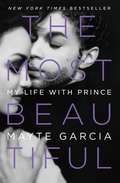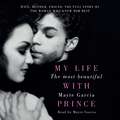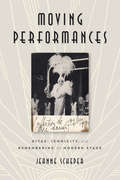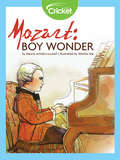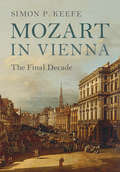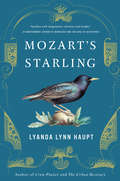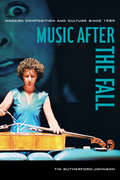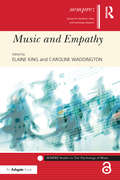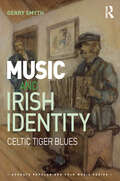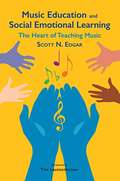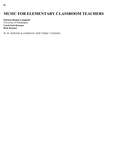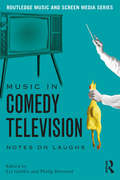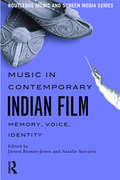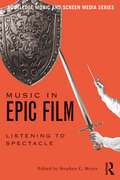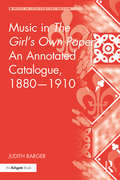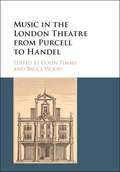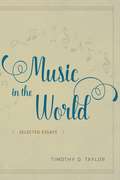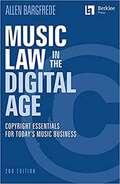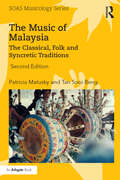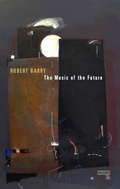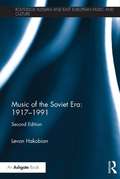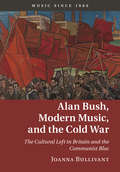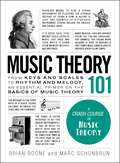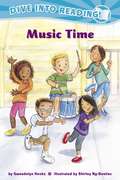- Table View
- List View
The Most Beautiful: My Life with Prince
by Mayte Garcia<P>At the one-year anniversary of his death, legendary musician Prince's first wife shares a uniquely intimate, candid, and revelatory look inside the personal and professional life of one of the world's most beloved icons. <P> In The Most Beautiful, a title inspired by the hit song Prince wrote about their legendary love story, Mayte Garcia for the first time shares the deeply personal story of their relationship and offers a singular perspective on the music icon and their world together: from their unconventional meeting backstage at a concert (and the long-distance romance that followed), to their fairy-tale wedding (and their groundbreaking artistic partnership), to the devastating losses that ultimately dissolved their romantic relationship for good. Throughout it all, they shared a bond more intimate than any other in Prince's life. <P>No one else can tell this story or can provide a deeper, more nuanced portrait of Prince--both the famously private man and the pioneering, beloved artist--than Mayte, his partner during some of the most pivotal personal and professional years of his career. The Most Beautiful is a book that will be returned to for decades, as Prince's music lives on with generations to come. <P><b>A New York Times Bestseller</b>
The Most Beautiful: My Life With Prince
by Mayte GarciaIn The Most Beautiful, a title inspired by the hit song Prince wrote about their legendary love story, Mayte Garcia for the first time shares the deeply personal story of their relationship and offers a singular perspective on the music icon and their world together: from their unconventional meeting backstage at a concert (and the long-distance romance that followed), to their fairy-tale wedding (and their groundbreaking artistic partnership), to the devastating losses that ultimately dissolved their romantic relationship for good. Throughout it all, they shared a bond more intimate than any other in Prince's life. No one else can tell this story or can provide a deeper, more nuanced portrait of Prince--both the famously private man and the pioneering, beloved artist--than Mayte, his partner during some of the most pivotal personal and professional years of his career. The Most Beautiful is a book that will be returned to for decades, as Prince's music lives on with generations to come.Written and read by Mayte Garcia(p) 2017 Hachette Audio
Moving Performances: Divas, Iconicity, and Remembering the Modern Stage
by Jeanne ScheperFabulous yet fierce, imperious yet impetuous, boss yet bitchy—divas are figures of paradox. Their place in culture is equally contradictory, as they are simultaneously venerated and marginalized, hailed as timeless but then frequently forgotten or exhumed as cult icons by future generations. Focusing on four early twentieth-century divas—Aida Overton Walker, Loïe Fuller, Libby Holman, and Josephine Baker—who were icons in their own time, Moving Performances considers what their past and current reception reveals about changing ideas of race and gender. Jeanne Scheper examines how iconicity can actually work to the diva’s detriment, reducing her to a fetish object, a grotesque, or a figure of nostalgia. Yet she also locates more productive modes of reception that reach to revive the diva’s moving performances, imbuing her with an affective afterlife. As it offers innovative theorizations of performance, reception, and affect, Moving Performances also introduces readers to four remarkable women who worked as both cultural producers and critics, deftly subverting the tropes of exoticism, orientalism, and primitivism commonly used to dismiss women of color. Rejecting iconic depictions of these divas as frozen in a past moment, Scheper vividly demonstrates how their performances continue to inspire ongoing movements.
Mozart: Boy Wonder
by Marcia Amidon LustedWolfgang Amadeus Mozart had amazing talent at a very young age, forever changing the idea of what a child prodigy was.
Mozart in Vienna: The Final Decade
by Keefe Simon P.Mozart's greatest works were written in Vienna in the decade before his death (1781-1791). This biography focuses on Mozart's dual roles as a performer and composer and reveals how his compositional processes are affected by performance-related concerns. It traces consistencies and changes in Mozart's professional persona and his modus operandi and sheds light on other prominent musicians, audience expectations, publishing, and concert and dramatic practices and traditions. Giving particular prominence to primary sources, Simon P. Keefe offers new biographical and critical perspectives on the man and his music, highlighting his extraordinary ability to engage with the competing demands of singers and instrumentalists, publishing and public performance, and concerts and dramatic productions in the course of a hectic, diverse and financially uncertain freelance career. This comprehensive and accessible volume is essential for Mozart lovers and scholars alike, exploring his Viennese masterpieces and the people and environments that shaped them.
Mozart's Starling
by Lyanda Lynn HauptOn May 27th, 1784, Wolfgang Amadeus Mozart met a flirtatious little starling in a Viennese shop who sang an improvised version of the theme from his Piano Concerto no. 17 in G major. Sensing a kindred spirit in the plucky young bird, Mozart bought him and took him home to be a family pet. For three years, the starling lived with Mozart, influencing his work and serving as his companion, distraction, consolation, and muse.Two centuries later, starlings are reviled by even the most compassionate conservationists. A nonnative, invasive species, they invade sensitive habitats, outcompete local birds for nest sites and food, and decimate crops. A seasoned birder and naturalist, Lyanda Lynn Haupt is well versed in the difficult and often strained relationships these birds have with other species and the environment. But after rescuing a baby starling of her own, Haupt found herself enchanted by the same intelligence and playful spirit that had so charmed her favorite composer.In Mozart's Starling, Haupt explores the unlikely and remarkable bond between one of history's most cherished composers and one of earth's most common birds. The intertwined stories of Mozart's beloved pet and Haupt's own starling provide an unexpected window into human-animal friendships, music, the secret world of starlings, and the nature of creative inspiration. A blend of natural history, biography, and memoir, Mozart's Starling is a tour de force that awakens a surprising new awareness of our place in the world.
Music after the Fall: Modern Composition and Culture since 1989
by Tim Rutherford-JohnsonMusic after the Fall is the first book to survey contemporary Western art music within the transformed political, cultural, and technological environment of the post–Cold War era. In this book, Tim Rutherford-Johnson considers musical composition against this changed backdrop, placing it in the context of globalization, digitization, and new media. Drawing connections with the other arts, in particular visual art and architecture, he expands the definition of Western art music to include forms of composition, experimental music, sound art, and crossover work from across the spectrum, inside and beyond the concert hall. Each chapter is a critical consideration of a wide range of composers, performers, works, and institutions, and develops a broad and rich picture of the new music ecosystem, from North American string quartets to Lebanese improvisers, from electroacoustic music studios in South America to ruined pianos in the Australian outback. Rutherford-Johnson puts forth a new approach to the study of contemporary music that relies less on taxonomies of style and technique than on the comparison of different responses to common themes of permission, fluidity, excess, and loss.
Music and Empathy (SEMPRE Studies in The Psychology of Music)
by Elaine King Caroline WaddingtonIn recent years, empathy has received considerable research attention as a means of understanding a range of psychological phenomena, and it is fast drawing attention within the fields of music psychology and music education. This volume seeks to promote and stimulate further research in music and empathy, with contributions from many of the leading scholars in the fields of music psychology, neuroscience, music philosophy and education. It exposes current developmental, cognitive, social and philosophical perspectives on research in music and empathy, and considers the notion in relation to our engagement with different types of music and media. Following a Prologue, the volume presents twelve chapters organised into two main areas of enquiry. The first section, entitled 'Empathy and Musical Engagement', explores empathy in music education and therapy settings, and provides social, cognitive and philosophical perspectives about empathy in relation to our interaction with music. The second section, entitled 'Empathy in Performing Together', provides insights into the role of empathy across non-Western, classical, jazz and popular performance domains. This book will be of interest to music educators, musicologists, performers and practitioners, as well as scholars from other disciplines with an interest in empathy research.
Music and Irish Identity: Celtic Tiger Blues (Ashgate Popular and Folk Music Series)
by Gerry SmythMusic and Irish Identity represents the latest stage in a life-long project for Gerry Smyth, focusing here on the ways in which music engages with particular aspects of Irish identity. The nature of popular music and the Irish identity it supposedly articulates have both undergone profound change in recent years: the first as a result of technological and wider industrial changes in the organisation and dissemination of music as seen, for example, with digital platforms such as YouTube, Spotify and iTunes. A second factor has been Ireland’s spectacular fall from economic grace after the demise of the "Celtic Tiger", and the ensuing crisis of national identity. Smyth argues that if, as the stereotypical association would have it, the Irish have always been a musical race, then that association needs re-examination in the light of developments in relation to both cultural practice and political identity. This book contributes to that process through a series of related case studies that are both scholarly and accessible. Some of the principal ideas broached in the text include the (re-)establishment of music as a key object of Irish cultural studies; the theoretical limitations of traditional musicology; the development of new methodologies specifically designed to address the demands of Irish music in all its aspects; and the impact of economic austerity on musical negotiations of Irish identity. The book will be of seminal importance to all those interested in popular music, cultural studies and the wider fate of Ireland in the twenty-first century.
Music as Biology
by Dale PurvesWhy do human beings find some tone combinations consonant and others dissonant? Why do we make music using only a small number of scales out the billions that are possible? Dale Purves shows that rethinking music theory in biological terms offers a new approach to centuries-long debates about the organization and impact of music.
Music Education and Social Emotional Learning: The Heart of Teaching Music
by Scott N. EdgarMusic educators are in a prime position to help students become socially and emotionally competent while at the same time develop excellent musicianship. For every child to be successful in the music classroom, teachers need to be aware of the whole student. How do music educators create success when students every day struggle with social awareness, bullying, communication, problem solving, and other challenges.
Music for Elementary Classroom Teachers
by Patricia Shehan Campbell Carol Scott-Kassner Kirk KassnerLearn how to use the power of music to enhance other subjects. Written for both elementary education majors and K-6 classroom teachers, the text is rooted in cognitive research on children’s development. <p><p>The book offers myriad instructional plans that weave songs, dances, and carefully constructed listening experiences into subjects ranging from language arts and social studies to mathematics, science, and the arts. It also provides opportunities for engaging children in expressive-creative practices.
Music in Comedy Television: Notes on Laughs
by Liz Giuffre Philip HaywardThe study of television and music has expanded greatly in recent years, yet to date no book has focused on the genre of comedy television as it relates to music. Music in Comedy Television: Notes on Laughs fills that gap, breaking new critical ground. With contributions from an array of established and emerging scholars representing a range of disciplines, the twelve essays included cover a wide variety of topics and television shows, spanning nearly fifty years across network, cable, and online structures and capturing the latest research in this growing area of study. From Sesame Street to Saturday Night Live, from Monty Python to Flight of the Conchords, this book offers the perfect introduction for students and scholars in music and media studies seeking to understand the role of music in comedy onscreen and how it relates to the wider culture.
Music in Contemporary Indian Film: Memory, Voice, Identity
by Jayson Beaster-Jones Natalie SarrazinMusic in Contemporary Indian Film: Memory, Voice, Identity provides a rich and detailed look into the unique dimensions of music in Indian film. Music is at the center of Indian cinema, and India’s film music industry has a far-reaching impact on popular, folk, and classical music across the subcontinent and the South Asian diaspora. In twelve essays written by an international array of scholars, this book explores the social, cultural, and musical aspects of the industry, including both the traditional center of "Bollywood" and regional film-making. Concentrating on films and songs created in contemporary, post-liberalization India, this book will appeal to classes in film studies, media studies, and world music, as well as all fans of Indian films.
Music in Epic Film: Listening to Spectacle
by Stephen C. MeyerAs both a distinct genre and a particular mode of filmmaking, the idea of the epic has been central to the history of cinema. Including contributions from both established and emerging film music scholars, the ten essays in Music in Epic Film: Listening to Spectacle provide a cross-section of contemporary scholarship on the subject. They explore diverse topics, including the function of music in epic narratives, the socio-political implications of cinematic music, and the use of pre-existing music in epic films. Intended for students and scholars in film music, film appreciation, and media studies, the wide range of topics and the diversity of the films that the authors discuss make Music in Epic Film: Listening to Spectacle an ideal introduction to the field of music in epic film.
Music in The Girl's Own Paper: An Annotated Catalogue, 1880-1910 (Music in Nineteenth-Century Britain)
by Judith BargerNineteenth-century British periodicals for girls and women offer a wealth of material to understand how girls and women fit into their social and cultural worlds, of which music making was an important part. The Girl's Own Paper, first published in 1880, stands out because of its rich musical content. Keeping practical usefulness as a research tool and as a guide to further reading in mind, Judith Barger has catalogued the musical content found in the weekly and later monthly issues during the magazine's first thirty years, in music scores, instalments of serialized fiction about musicians, music-related nonfiction, poetry with a musical title or theme, illustrations depicting music making and replies to musical correspondents. The book's introductory chapter reveals how content in The Girl's Own Paper changed over time to reflect a shift in women's music making from a female accomplishment to an increasingly professional role within the discipline, using 'the piano girl' as a case study. A comparison with musical content found in The Boy's Own Paper over the same time span offers additional insight into musical content chosen for the girls' magazine. A user's guide precedes the chronological annotated catalogue; the indexes that follow reveal the magazine's diversity of approach to the subject of music.
Music in the London Theatre from Purcell to Handel
by Colin Timms Bruce WoodThis book is concerned with a hundred years of musical drama in England. It charts the development of the genre from the theatre works of Henry Purcell (and his contemporaries) to the dramatic oratorios of George Frideric Handel (and his). En route it investigates the objections to all-sung drama in English that were articulated in the decades around 1700, various proposed solutions, the importation of Italian opera, and the creation of the dramatic oratorio - English drama, all-sung but not staged. Most of the constituent essays take an in-depth look at a particular aspect of the process, while others draw attention to dramatic qualities in non-dramatic works that also were performed in the theatre. The journey from Purcell to Handel illustrates the vigour and vitality of English theatrical and musical traditions, and Handel's dramatic oratorios and other settings of English words answer questions posed before he was born.
Music in the World: Selected Essays
by Timothy D. TaylorIn music studies, Timothy D. Taylor is known for his insightful essays on music, globalization, and capitalism. Music in the World is a collection of some of Taylor’s most recent writings—essays concerned with questions about music in capitalist cultures, covering a historical span that begins in the late nineteenth and early twentieth centuries and continues to the present. These essays look at shifts in the production, dissemination, advertising, and consumption of music from the industrial capitalism of the nineteenth century to the globalized neoliberal capitalism of the past few decades. In addition to chapters on music, capitalism, and globalization, Music in the World includes previously unpublished essays on the continuing utility of the concept of culture in the study of music, a historicization of treatments of affect, and an essay on value and music. Taken together, Taylor’s essays chart the changes in different kinds of music in twentieth- and twenty-first-century music and culture from a variety of theoretical perspectives.
Music Law in the Digital Age: Learn Copyright Essentials in Order to Succeed in Today's Music Industry
by Allen BargfredeWith the free-form exchange of music files and musical ideas online, understanding copyright laws has become essential to career success in the new music marketplace. This cutting-edge, plain-language guide shows you how copyright law drives the contemporary music industry. By looking at the law and its recent history, you will understand the new issues introduced by the digital age, as well as continuing issues of traditional copyright law. <p><p> Whether you are an artist, lawyer, entertainment Web site administrator, record label executive, student, or other participant in the music industry, this book will help you understand how copyright law affects you, helping you use the law to your benefit.
The Music of Malaysia: The Classical, Folk and Syncretic Traditions (SOAS Musicology Series)
by Patricia Matusky Tan Sooi BengThe Music of Malaysia, first published in Malay in 1997 and followed by an English edition in 2004 is still the only history, appreciation and analysis of Malaysian music in its many and varied forms available in English. The book categorizes the types of music genres found in Malaysian society and provides an overview of the development of music in that country. Analyses of the music are illustrated with many examples transcribed from original field recordings. Genres discussed include theatrical and dance forms, percussion ensembles, vocal and instrumental music and classical music. It is an excellent introduction to and exploration of the country's vibrant musical culture. This new, fully revised and updated edition includes time lines, listening guides and two audio CDs of field recordings that are analysed and discussed in the text.
The Music of the Future
by Robert BarryThe Music of the Future is not a book of predictions or speculations about how to save the music business or the bleeding edge of technologies. Rather, it's a history of failures, mapping 200 years of attempts by composers, performers and critics to imagine a future for music. Encompassing utopian dream cities, temporal dislocations and projects for the emancipation of all sounds, The Music of the Future is in the end a call to arms for everyone engaged in music: "to fail again, fail better."
Music of the Soviet Era: 2nd Edition (Routledge Russian and East European Music and Culture)
by Levon HakobianThis volume is a comprehensive and detailed survey of music and musical life of the entire Soviet era, from 1917 to 1991, which takes into account the extensive body of scholarly literature in Russian and other major European languages. In this considerably updated and revised edition of his 1998 publication, Hakobian traces the strikingly dramatic development of the music created by outstanding and less well-known, ‘modernist’ and ‘conservative’, ‘nationalist’ and ‘cosmopolitan’ composers of the Soviet era. The book’s three parts explore, respectively, the musical trends of the 1920s, music and musical life under Stalin, and the so-called ’Bronze Age’ of Soviet music after Stalin’s death. Music of the Soviet Era: 1917–1991 considers the privileged position of music in the USSR in comparison to the written and visual arts. Through his examination of the history of the arts in the Soviet state, Hakobian’s work celebrates the human spirit’s wonderful capacity to derive advantage even from the most inauspicious conditions.
Music since 1900: The Cultural Left in Britain and the Communist Bloc (Music since 1900)
by Joanna BullivantThe first major study of Alan Bush, this book provides new perspectives on twentieth-century music and communism. British communist, composer of politicised works, and friend of Soviet musicians, Bush proved to be 'a lightning rod' in the national musical culture. His radical vision for British music prompted serious reflections on aesthetics and the rights of artists to private political opinions, as well as influencing the development of state-sponsored music making in East Germany. Rejecting previous characterisations of Bush as political and musical Other, Joanna Bullivant traces his aesthetic project from its origins in the 1920s to its collapse in the 1970s, incorporating discussion of modernism, political song, music theory, opera, and Bush's response to the Soviet music crisis of 1948. Drawing on a wealth of archival sources, including recently released documents from MI5, this book constructs new perspectives on the 'cultural Cold War' through the lens of the individual artist.
Music Theory 101: From Keys and Scales to Rhythm and Melody, an Essential Primer on the Basics of Music Theory (Adams 101)
by Brian Boone Marc SchonbrunLearn the basics of music theory in this comprehensive and accessible guide.From classical to hard rock, and jazz to hip hop, music is constantly evolving. But its fundamental principles remain largely unchanged. Understanding these basics is key to becoming a successful musician, composer, or well-rounded music lover. Music Theory 101 covers everything novice musicians and lifelong learners need to know, including:-How to read sheet music-Understanding the construction of chords and scales-The different rhythm and time signatures-How keys are identified and organizedFull of music trivia, music history, comprehensive instruction, and visual aids of scales, music symbols, and chords, Music Theory 101 is the essential guide you need for a crash course in music theory that even professional musicians would envy.
Music Time
by Gwendolyn Hooks Shirley Ng-BenitezHenry dreams of becoming a rock star drummer and practices at home whenever he can. One day while Henry is drumming, his mom has to work, and asks him to stop playing. Henry decides to go outside to play his drum and he sees his friends. Henry wants to keep practicing, but he also wants to play with his friends. By playing Freeze Dance, he can do both. And when his mother finishes work that evening, they figure out how to enjoy music together too.
